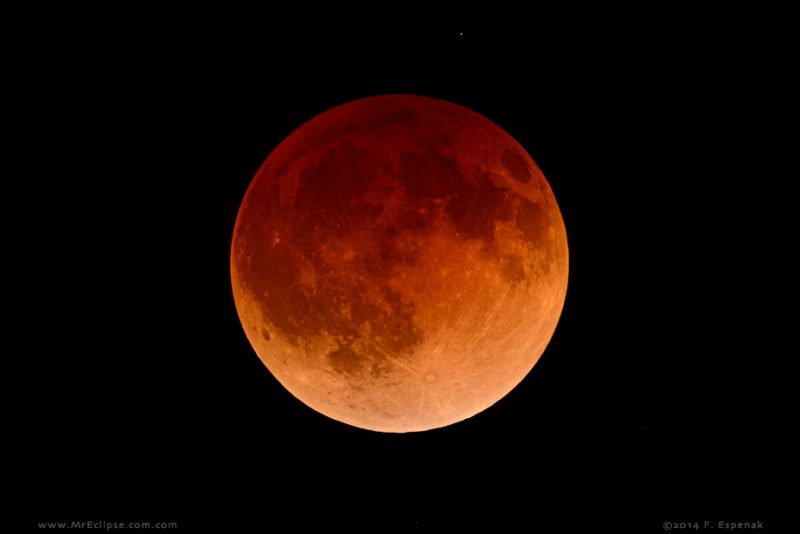
Coming up … Total lunar eclipse of May 15-16, 2022
During a lunar eclipse, you’ll see the Earth’s shadow creeping across the moon’s face. The shadow appears dark, like a bite out of a cookie, until the shadow completely covers the moon. Then, during the breathtaking time of totality, the shadow on the moon’s face appears red, rusty orange or copper-colored. Why?
Why a lunar eclipse looks red
The reason stems from the air we breathe. During a total lunar eclipse, the Earth lies directly between the sun and the moon, causing the Earth to cast its shadow on the moon. If Earth didn’t have an atmosphere, then, when the moon is entirely within Earth’s shadow, the moon would appear black, perhaps even invisible.
Thanks to Earth’s atmosphere, what actually happens is much more subtle and beautiful.
Earth’s atmosphere extends about 50 miles (80 km) above Earth’s surface. During a total lunar eclipse, when the moon is submerged in Earth’s shadow, there’s a circular ring around Earth – the ring of our atmosphere – through which the sun’s rays pass.
Sunlight contains a range of frequencies
White sunlight consists of a range of different colors, or frequencies. As sunlight passes through our atmosphere, the green to violet portion of the light spectrum is, essentially, filtered out. This same effect, by the way, is why our sky is blue during the day. Meanwhile, the reddish portion of the spectrum is least affected.
What’s more, when this reddish light first enters our atmosphere, it’s bent (refracted) toward the Earth’s surface. And it’s bent again when it exits on the other side of Earth. This double bending sends the reddish light onto the moon during a total lunar eclipse. It also explains why sunrises and sunsets look red.

The brightness and color of an eclipsed moon
Depending on the conditions of our atmosphere at the time of the eclipse (dust, humidity, smoke, temperature and so on can all make a difference), the surviving light illuminates the moon with a color that ranges from copper-colored to deep red.
A moon in total eclipse never appears as bright as a full moon, but how dark it gets varies. In December 1992, not long after the eruption of Mount Pinatubo in the Philippines, there was so much dust in Earth’s atmosphere that the totally eclipsed moon was barely visible.
All total lunar eclipses do not look alike
Can anyone know in advance how red or dark the moon will appear during a total lunar eclipse? Not really. Before an eclipse takes place, you’ll hear people speculate about it. That uncertainty is part of the fun of eclipses, so enjoy! And watch for the red moon during a lunar eclipse.
What about that blue band?
Another color to watch for at the beginning and end of totality is a blue band of light along the limb of the moon. This blue band is light passing through our ozone layer – which absorbs red light – that allows blue light to come through. The blue band is frequently caught in photos but may be hard to see visually.

Bottom line: The moon can look red during a total lunar eclipse because of sunlight that’s filtered and refracted by Earth’s atmosphere.
Read about the total lunar eclipse of May 15-16, 2022
Visit EarthSky’s Best Places to Stargaze to find an eclipse-viewing location
Post your eclipse photo to EarthSky Community Photos
The post A total lunar eclipse looks red. Why? first appeared on EarthSky.
0 Commentaires